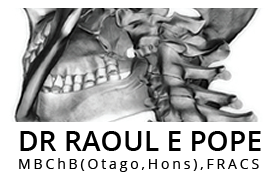Neurostimulation | Spinal Cord Stimulation Devices
Introduction to Neurostimulation
What is Neurostimulation?
Neurostimulation is a method of therapy that uses electrical stimulation to cause changes in the nervous system. It is a form of treatment that is mainly used in people who have chronic pain that is not responsive to treatment.
There are different pain pathways in the human body; those that are controlled by the brain and spinal cord and those that are controlled by other "peripheral" nerves (nerves that extend out from the spinal cord). It is possible to stimulate any one of these pain pathways to hopefully reduce the sensation of pain in a patient, replacing it with a feeling that resembles "pins and needles" or a tingling sensation. This alteration in sensation is called paraesthesia. Neurostimulation is used for many other purposes other than just the treatment of pain, for example it can be used in the brain for the treatment of Parkinson's disease.
Neurostimulation is a neurosurgical form of therapy. This means that it is a surgical procedure that needs to be performed by a trained specialist. There are many other forms of neurosurgical procedures, the advantage of using neurostimulation are that it is relatively safe, reversible and adjustable.
The Development of Neurostimulation?
Neurostimulation has been used for the past 50 years. However it use has been increasing in recent times due to new exciting technology that has been developed, as well as research revealing more potential uses for this form of treatment.
Stimulation of the peripheral nerves or peripheral nerve stimulation was the first form of neurostimulation to be developed, however it was not very popular initially and was replaced by a technique which stimulated the spinal cord, known as spinal cord stimulation. Stimulation of the brain was first performed in 1874, however it was only used as a form of therapy in the 1940's for the treatment of people with mental health problems. In the 1970's it gained some popularity as a form of treatment for people with Parkinson's disease, but because of its drawbacks, its popularity didn't last very long.
Types of Neurostimulation
Spinal Cord Stimulation (SCS)
Spinal cord stimulation has a long history, however its use has only been widely accepted in the past 5 years or so. It is most commonly used in the treatment of pain that is not responsive to treatment and is not due to cancer. Examples of its use are:
Failed Back Surgery Syndrome (FBSS) - continued pain after back surgery.
Complex Regional Pain Syndrome (CRPS) - condition where there is pain, swelling and difficulties with movement in the limbs.
Extremity pain due to peripheral neuropathy (failure of the nerves carrying information to the brain and spinal cord causing pain, sensory problems and problems with movement), root injury and phantom limb pain (pain in an already amputated arm or leg, as if it were still there).
Pain due to lack of blood supply in a limb, usually due to diseased blood vessels supplying the limb.
In addition, many other applications of SCS that are being developed and investigated, these include:
Chest pain in people with heart problems (such as angina).
Urinary Incontinence (reduced ability to control urination).
Occipital neuralgia (condition affecting a nerve supplying the scalp causing pain and headaches).
Interstitial cystitis (condition causing pain in the bladder and the surrounding pelvic region).
There are two main systems of SCS that are currently available:
Totally Implantable System: This system delivers an electrical pulse using a pulse generator that has its own power source. This generator is implanted in the person's skin and sends electrical impulses down a wire that is attached to a specific area of the spinal cord.
A Radiofrequency coupled system: This system also consists of an impulse generator that is implanted under the person's skin, but this is coupled with a radiofrequency receiver. The difference is that a radiofrequency is used to stimulate the generator to produce impulses. A radiotransmitter, which produces the radiowaves, is worn on the patient’s wrist like a wrist band and when stimulation of the spinal cord is needed a radiofrequency antenna is attached over the receiver that is implanted under the skin.
The implantation procedure itself occurs in two stages:
Stage 1: This is where the lead is implanted for a trial of the therapy which may last between 1 and 10 days.
Stage 2: This is where the complete neurostimulation system is implanted following the trial period.
It is important to know that there are a variety of conditions where the use of SCS is not recommended, examples of these are:
Infection near the spine
An infection that affects the whole body
Bleeding disorders
Scarring the the part of the spine where the wires are placed
Patients with cardiac pacemakers
Peripheral Nerve Stimulation (PNS)
This form of neurostimulation is generally used for treatment unresponsive pain that originates from peripheral nerves. There are many different nerves that can be stimulated using this form of therapy, examples of some are the median, ulna and radial nerves of the arm.
When the procedure is being performed the nerve that is going to be stimulated is surgically exposed. Then the wire and the electrode are inserted, and much like in spinal cord stimulation a pulse generator is also implanted. The same two types of systems are available in peripheral nerve stimulation where a totally implantable system or a radiofrequency coupled system can be used. Once again, much like the spinal cord stimulation system the unit is tested for a trial period and then implanted permanently.
Courtesy of: http://www.virtualpaincentre.com/treatments.asp?sid=53
